Industry trends and in-demand skills are constantly changing, necessitating organizations to prioritize employee training plans to keep up with them.
It’s no surprise that employees with suitable training are likely to stay longer with their organization.
And the latest statistics highlight the importance of employee training for organizational success.
- 94% of employees stick with companies that invest in employee training programs.
- Organizations with a good training program can retain 30-50% more employees.
- 70% of employees leave their organization to work for another company that invests in employee training and development.
An effective training program requires thoughtful planning. If conducted correctly, your employees will be equipped with the skills required to perform their job.
But, how can you create a training plan for employees?
By following the right strategies and best practices and choosing the correct training method!
Before we discuss the strategies, let’s quickly understand what an employee training plan is, why it’s important, and how to make it successful.
Watch: What is Employee Training?
What Is an Employee Training Plan?
An employee training plan is a blueprint or roadmap for employee training programs. It consists of a series of steps for training employees on important job knowledge and skills they require to perform their job roles to improve their performance.
Each program is meant for achieving specific business goals and learning objectives.
It’s important to understand that learning is an ongoing experience, and training should be made an integral part of day-to-day business activities.
But not every employee will need training in the same subject.
For example, a salesperson will require training on essential sales skills, CRM, sales process, sales management, service sales, and more.
On the contrary, a customer service agent will require training on active listening skills, problem-solving skills, crisis management, etc.
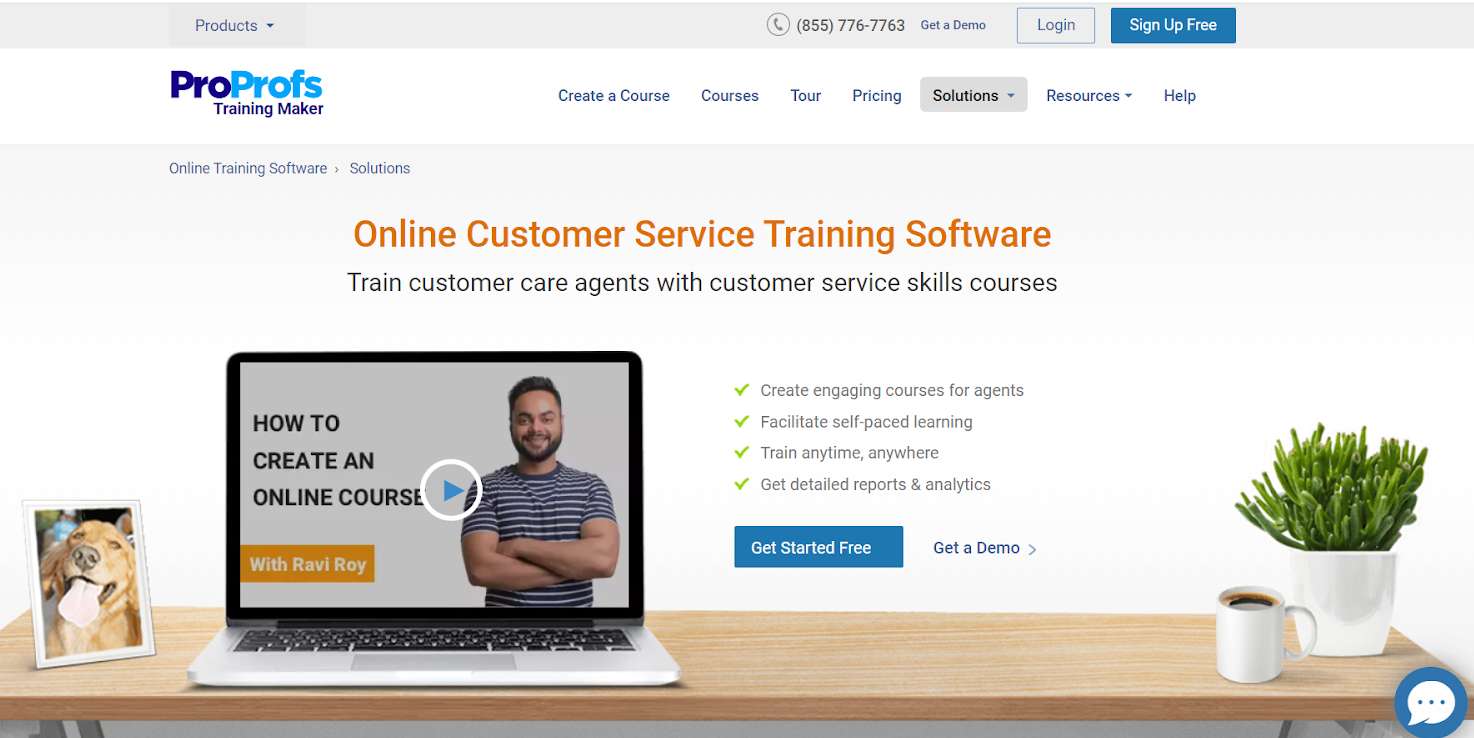
Depending on the purpose, an employee training plan can be of different types, which you’ll learn later in this blog.
Why Is an Employee Training Plan Important?
A training plan is important because it:
Provides a Learning Roadmap
With a proper training plan, you can create a roadmap or a learning path for your learners.
A well-structured employee training plan will have a set of planned learning activities that’ll help learners attempt learning materials in the correct sequence.
Keeps You Organized
Once you have a plan, it becomes easier to organize the lessons in a logical order.
Prioritize the topics, so your learners know which lessons to cover first and which to attempt last.
Reduces Employee Turnover
Employee turnovers can prove to be expensive. According to U.S. News & World Report, employees are leaving organizations in record-breaking numbers as part of The Great Resignation which is predicted to last for the next couple of years, as per Forbes.
While training isn’t a silver bullet to eliminate employee turnovers, a well-curated training plan can go a long way in reducing it. A clear and concise training session will avoid detours, and your employees will be on the right track.
Improves Employee Morale
Business priorities are changing fast. Unfortunately, this has become one of the leading reasons for layoffs because employee skills are no longer in tandem with business requirements.
And layoffs can negatively impact employee morale.
This is exactly why you need to create a training plan for employees. A structured plan will ensure that employees have great insights into what is expected of them, and they’ll also get to know the skills they’ll gather throughout the training course.
Helps You Plan Presentation Techniques
While preparing an employee training plan, you can jot down all the possible presentation techniques. Using multimedia approaches to your course materials is the best practice to keep your employees engaged.
You can incorporate images, videos, PDFs, games, quizzes, and surveys to make the course content interesting.
Helps You Identify the Right Training Tool
Once you’ve drafted a plan, it becomes easier to think of the right training tool. You might conduct the training in online or offline mode.
If you’re conducting online employee training, make a list of all the online tools available on the market. For instance, you can shortlist the best LMS available on the market.
WATCH: How to Choose the Best Corporate Training Platform
Promotes Employee Engagement
Though training plans require time and effort, they ensure you’ve covered all the important topics that are relevant and important for your employees.
In fact, 93% of employees believe that a well-planned training session positively affects their engagement levels.
Planning and letting your employees know how the training will align with the company goals will help them put things into perspective.
Addresses Knowledge Gaps
Skill gaps are one of the top concerns for any organization as they can negatively affect the bottom line of their business.
A proper training plan helps you address knowledge gaps by identifying learner needs and choosing the right training method for optimal results.
Though employee training plans don’t assure 100% effectiveness of your training program, these minimize the chances of problems that could have occurred if you hadn’t prepared it at all in the first place.
Build a winning training plan for your employees
Access free tools to create customized programs.
Common Types of Employee Training Programs
There are plenty of training methods, each serving a different purpose. You must decide which program will fit your company’s needs to achieve the best outcome.
Onboarding Training
This training program focuses on helping the new hires understand their job roles and familiarize them with company rules and regulations, work ethics, culture, and resources. The aim is to help them quickly become productive members of the organization.
WATCH: How to Create an Employee Onboarding Training Program
The training session gives an overview of the organization and its products and customers. Employees also get a bird’s eye view of the company goals, rules, regulations, etc.
Safety and Compliance Training
Compliance training can be referred to as a type of workplace training where employees learn about the compliance rules, policies, and laws that apply to their conduct and job responsibilities.
An effective compliance training program can help employees follow all the policies of an organization and the guidelines of governing bodies to prevent liabilities, risks to health & safety, and loss of business reputation.
Such training programs cover federal and state laws on fraud detection, data security, anti-harassment laws, business ethics, etc.
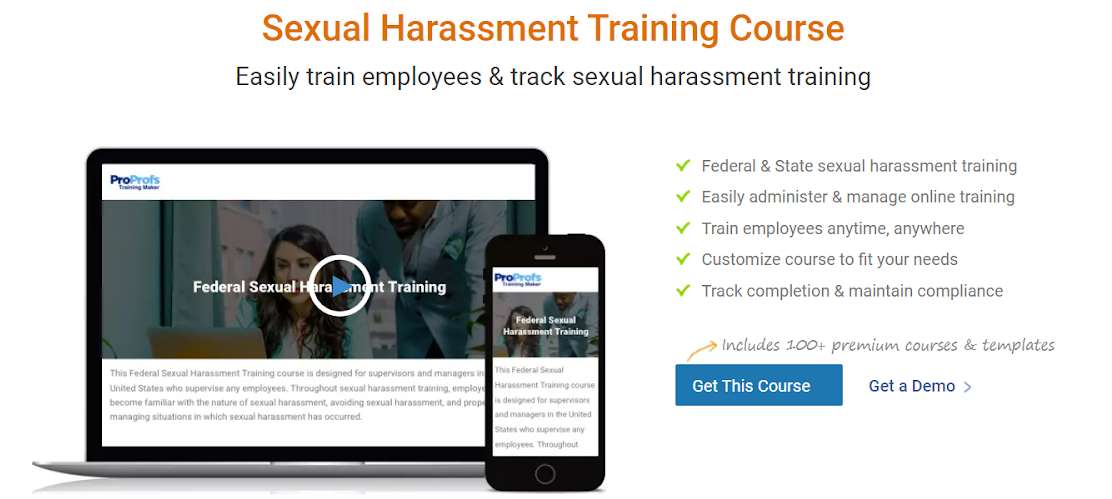
Your training program should also feature topics, such as OSHA and HIPAA if you belong to a related industry. These are the two important areas of compliance and have separate standards that must be adhered to by every employee.
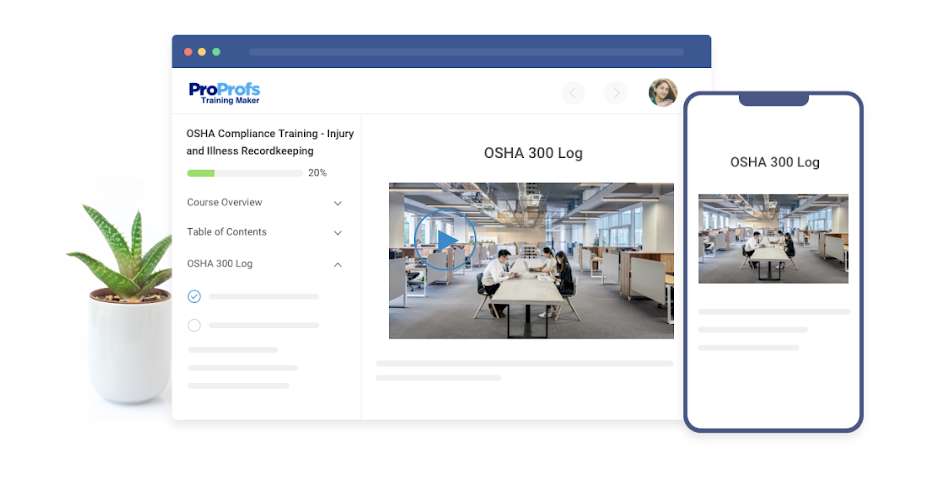
Safety Training, on the other hand, refers to learning programs designed to educate workers on workplace hazards and preventive procedures to minimize risks and injuries.
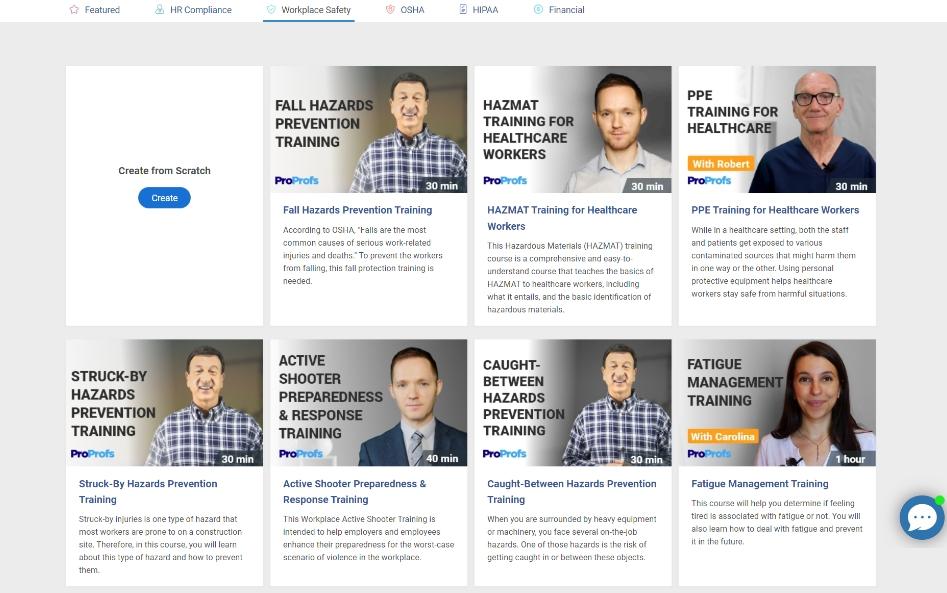
Product/Service Training
This training covers all the essential information about a company’s products and services that employees need to know to perform their jobs efficiently.
The training can focus on different learning aspects and goals based on employee roles. For instance, there can be product training for sales representatives, customer service, or the marketing team.
A product/service training is invaluable as it equips employees with sound product and service knowledge. It also develops confidence in them to become your brand ambassadors.
For example, it helps customer support teams reach out to the right audience with the right product/service information, address their pain points, build trust and loyalty, and achieve more sales.
Technical Training
With this training, employees can develop all the essential technical skills and master the technical aspects of the job.
The need for technical training has increased with the growing adoption of software applications by enterprises. Most organizations are providing technical knowledge through online training to avoid the risk of falling behind the competition.
Since there are many areas to cover, you can use professionally designed, ready-made training templates to save time and effort.
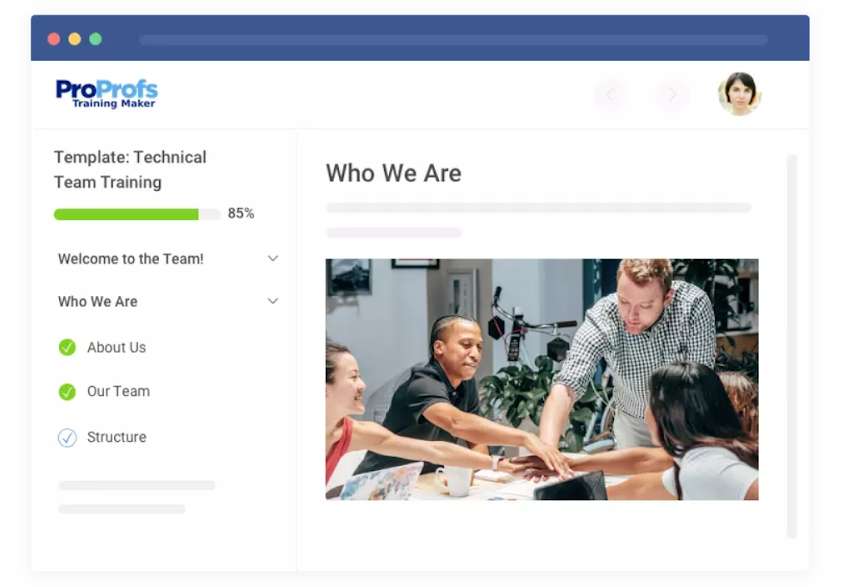
Soft Skills Training
Soft skills training is a program that focuses on improving the interpersonal skills of employees to develop strong and positive relationships with others. This includes communication skills, problem-solving skills, conflict resolution, etc.
Soft skills are essential because they help drive new clients, enhance customer relations, and build a strong workforce.
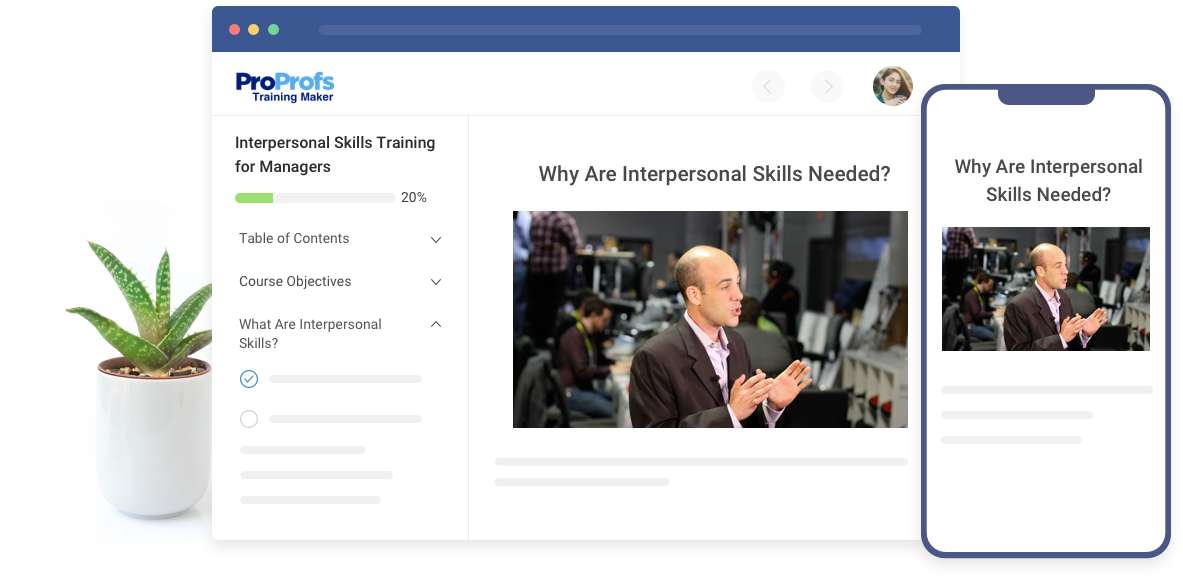
Diversity Training
These training programs train employees on workplace diversity, which play an integral role in maintaining harmonious relationships within the workplace.
The training facilitates positive interactions and reduces employee discrimination and prejudice.
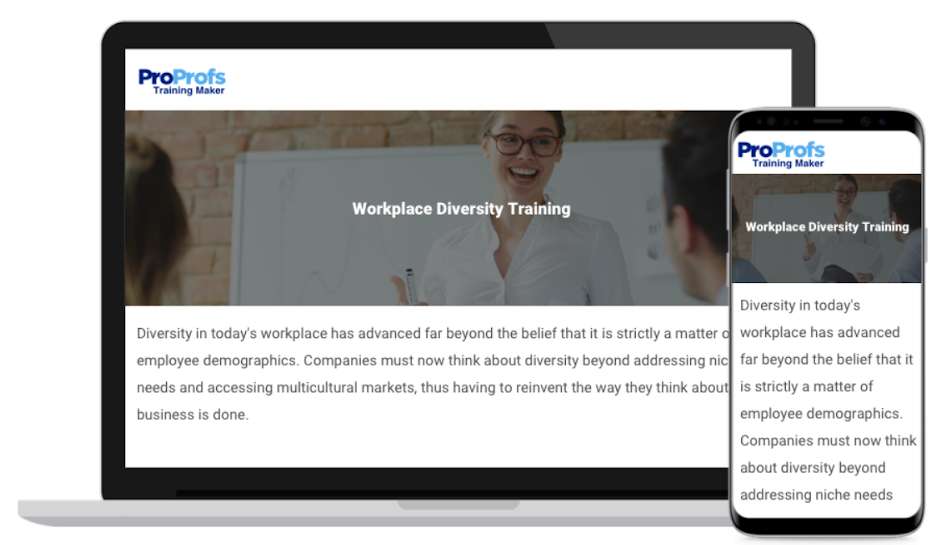
Through this training, employees learn to adjust to and work with other employees from diverse cultural backgrounds, which is vital for eliminating workplace discrimination based on gender, color, race, language, religion, etc., and harassment claims.
What to Include in a Training Plan
Whether you’re trying to create a new employee training plan or improve an existing one, there are a few elements every training plan should have.
Let’s quickly check out the elements you should include in your training plan.
Microlearning
Employees don’t like spending hours on training sessions, no matter how valuable the information is.
You should focus on short, crisp, and specific bursts of information. This strategy is known as microlearning, which prioritizes brief learning sessions to engage workers and meet the desired learning objectives.
Your microlearning module should be lean, adaptable, simple, and seamless.
Assessments
Employee training plans can be effective only when they retain the information. So, you’ll want to measure their engagement level throughout the course and get an idea of how well they’ve learned the information.
How can you measure learner progress?
Through post-training assessments! You can integrate quizzes into your courses to track learners’ performance.
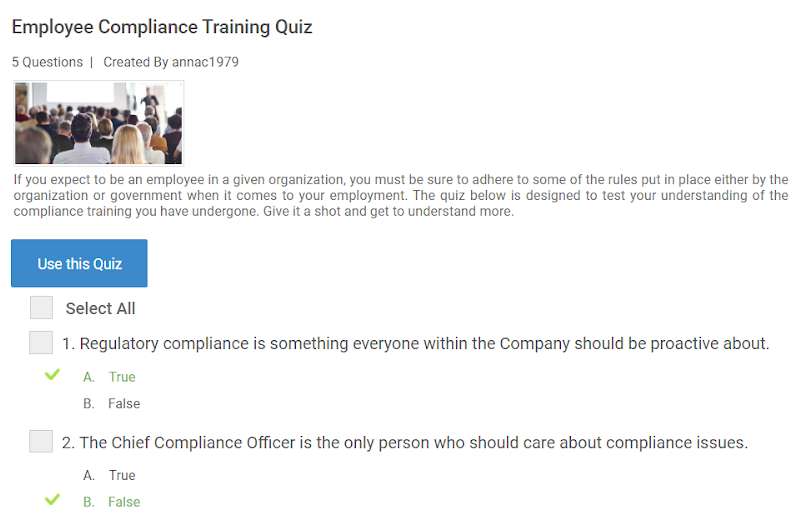
Through quizzes, you get a bird’s eye view of who has mastered the course and who still needs help. With some LMS solutions, you get the option of collecting video responses to your quiz questions and preventing question skipping. You can compile the quiz results into delightful reports to get a holistic view of who benefited most from your training.
WATCH: How to Create an Online Quiz in 5 Minutes
Collaboration
A training session becomes engaging when you enable learners to collaborate and form connections with their peers.
Let your learners interact during training and build a learning-focused community. This will convince learners of the support they will get during learning and motivate them to meet their learning objectives.
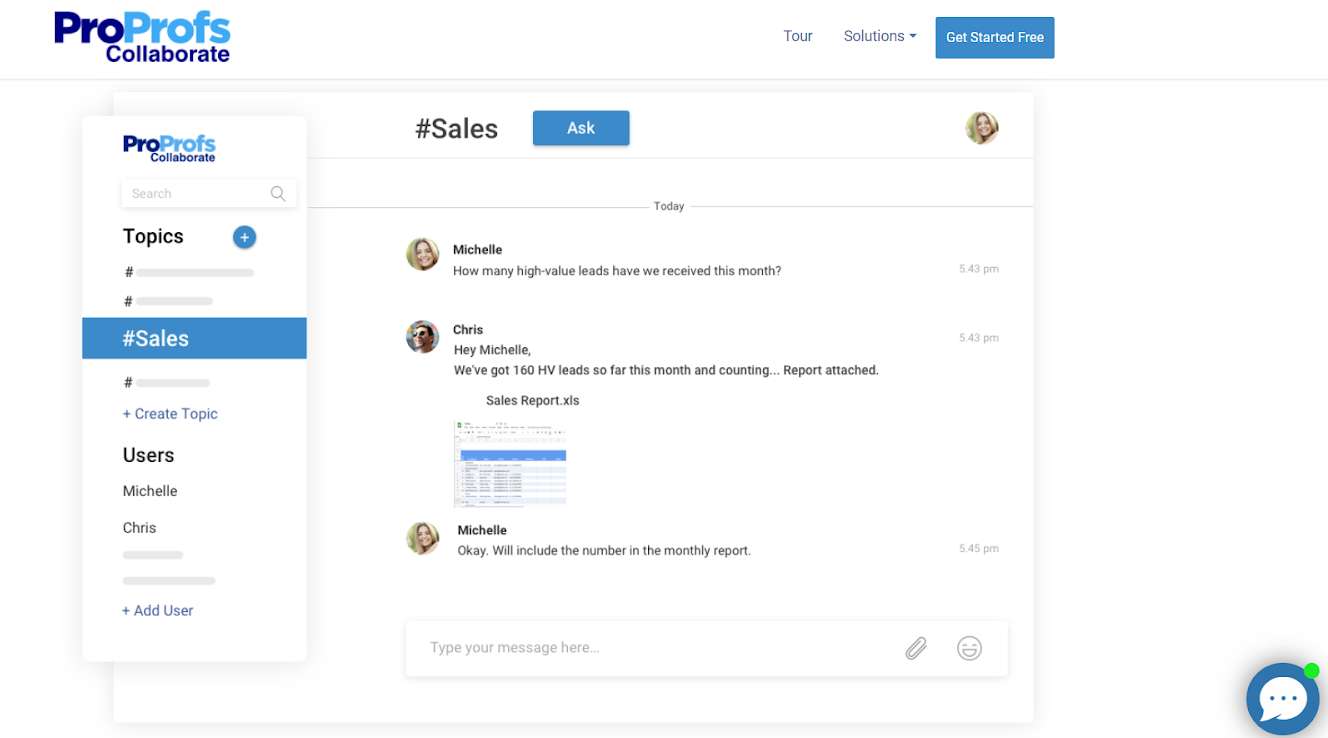
Set up Q&A discussions and chats to enable your learners to collaborate as a team and develop along the same paths.
Multimedia
Text-based training can be monotonous for learners and may affect the learning objectives. We’re in an age where technology is constantly evolving. Your training plan should leverage the technological benefits to keep your learners engaged.
So, how can you make your content engaging?
Use an LMS!
It lets you import and create multimedia content for an engaging learning experience.
WATCH: How to Add Media to Your Online Courses
With Learning Management Software, you can easily add images, videos, PDFs, presentations, etc., to your content.
Customized Learning Paths
Add custom learning paths to your training programs and enhance learner efficiency by 80%.
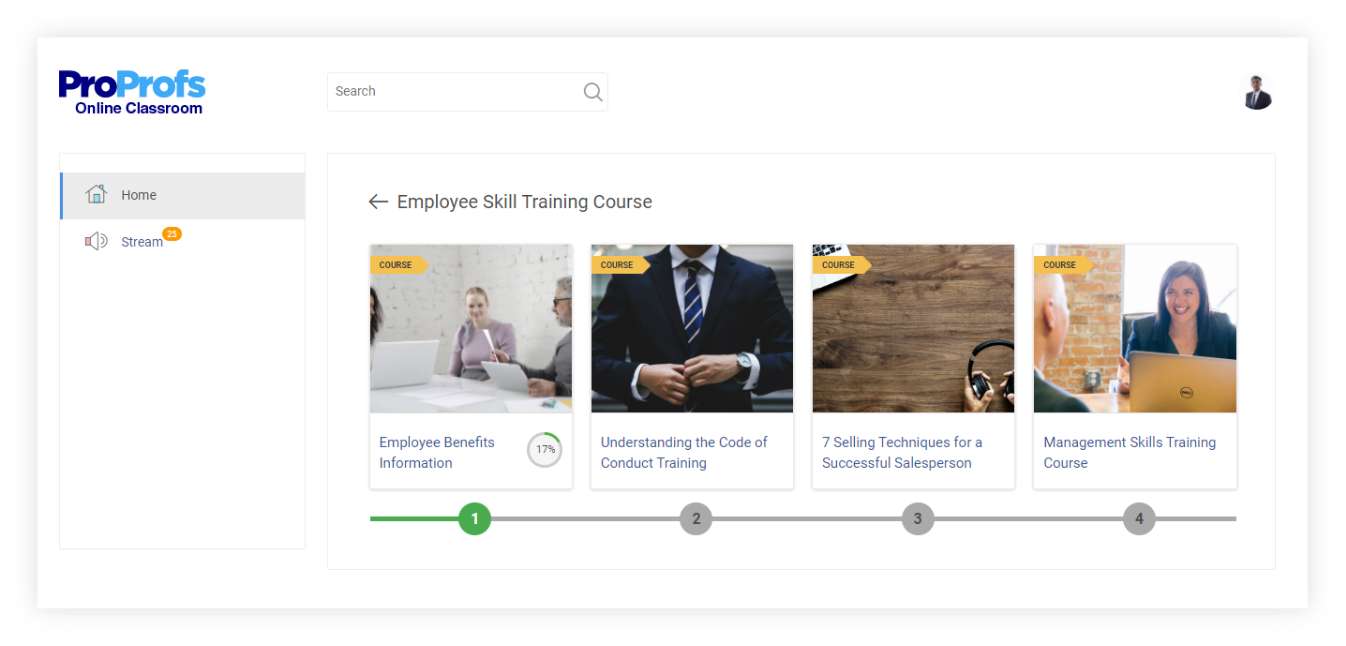
Help them understand your course from start to finish. Arrange your courses in logical order so learners can take up the courses in the order of complexity set by you.
Training is important for every employee and not just for recruits. A well-curated training plan is essential for creating a strong and engaged workforce.
Get Free Employee Training Software — All Features, Forever.
We've helped 567 companies train 200,000+ employees. Create courses in under a minute with our AI LMS or use 200+ ready-made courses on compliance, harassment, DEI, onboarding, and more!
What Makes An Employee Training Plan Successful?
A training plan is a template based on which you create your program. It offers an idea to the employee of what they’re going to learn in a simple and easy manner.
The training program’s success depends greatly on how a program is created and delivered.
Below are the top 6 rules to make your training plans effective and successful.
Identify Specific Goals
This is one of the most neglected aspects of a training plan. Whether you’re creating an offline or online training plan, make sure you identify and communicate the goal to your learners in advance.
To understand your training goals, you must first identify your business objectives.
What are you planning to achieve? More productivity, higher lead generation, or cost reduction?
Make sure you clear this out to your employees at the very beginning.
Be Concise
Once you’ve identified the objectives, plan your training programs so you can concisely bundle all the information.
During this step, you need to think of how you will formulate your training, what software you will use, and how to schedule the training.
A thoughtfully designed plan goes a long way in making your training easier and smoother.
Develop Courses and Learning Paths
You have your goals outlined and the materials you want to incorporate into your course. This is the stage where you will develop courses and create learning paths.
Some LMS software supports course creation by importing existing materials and providing a premium course library professionally designed by experts.
Plan and decide on the structure and logical sequence based on which you’ll prepare the course.
Consider hiring an outside partner if you find it challenging to develop your own training plan.
Add Multimedia
While creating a training plan, you should also make a list of the multimedia options that you wish to incorporate into your content. It can be videos, images, PDFs, presentations, podcasts, and more.
For example, if your training topic is ‘how to use software’, adding images or visuals to your content would be highly interactive and engaging for learners. Planning all these things will save your time and effort.
Use Experts
Training should always be imparted by professionals and experts. This ensures that the information is credible.
For example, if you’re planning to train your staff on a new product launch, the software development team that worked on the product would be considered the best experts.
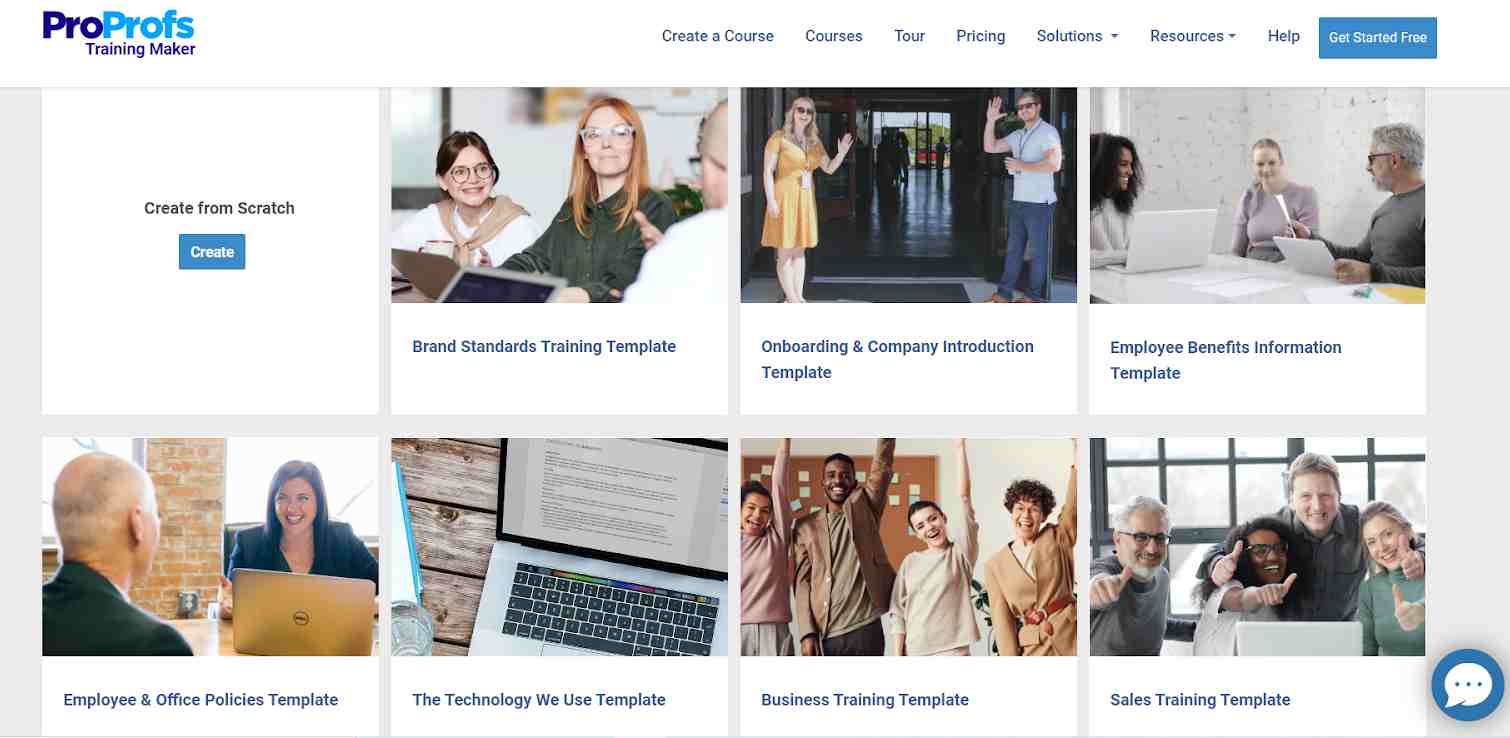
For online training, you can use ready-made templates and courses professionally designed by subject matter experts.
Integrate Feedback Mechanisms
While planning your training program, make sure you decide on the feedback mechanism you wish to integrate. For example, you can use surveys to gauge learner satisfaction.
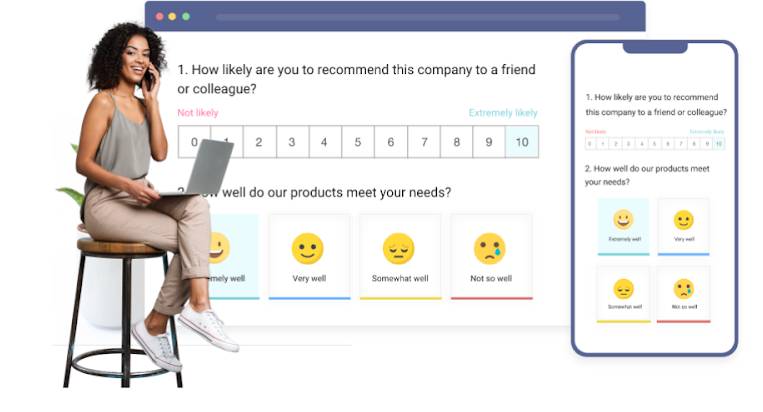
Feedback is important because it lets you know the strengths and weaknesses of your course content. By analyzing the weak areas of your training, you can make changes for the overall improvement of your course.
That was all about making a training plan successfully. Now, let’s explore some of the best strategies for creating an effective training plan.
Top 7 Strategies to Build an Effective Employee Training Plan
A well-planned training is useful for ongoing employee learning & development.
Whether you want to improve your existing programs or build a new one, here are the top strategies you need to implement to make your plans useful and effective.
Identify Your Business Goals
Before creating a training plan, it’s important to understand your business goals. You also need to establish KPIs to determine your financial, operational, and strategic goals and achievements.
Then you’ll have to develop training goals and success metrics based on your organizational goals.
After doing this, try to figure out the intended audience of your training program, know how to measure success, and find ways to track learner progress and engagement levels.
Determine Training Needs of Employees
Compare what knowledge your employees already have and what knowledge they need to gain to perform their jobs well.
Identify their learning styles because it’s a great way to know how they retain information. With all this information, you can prepare an effective employee training plan.
Develop Learning Objectives
Figure out what your employees will be able to do after completing your training program. Will they acquire knowledge or a new skill?
Learning objectives are outcomes that learners are expected to learn at the end of the course. The objectives can be acquiring skills, knowledge, or proficiencies.
Develop Training Materials
Next, you need to prepare your course content. Keep your learning objectives handy, as this will ensure you have included everything in your training material required to meet the objectives.
But before that, prepare a solid training plan to ensure nothing is missed. Prepare the course based on the plan and integrate multimedia like images, videos, audios, podcasts, PDFs, etc., to make your courses engaging.
Implement Your Training Program
Get ready to launch your program and inform the participants about the same. Note that an LMS could be of great help at this stage.
A Learning Management System or LMS helps you to create courses, assign them to your learners, track performance, and derive reports.
As far as implementation of training programs are concerned, it can be done in various ways. It can be through on-site classroom training, virtual classroom training, or a combination of both.
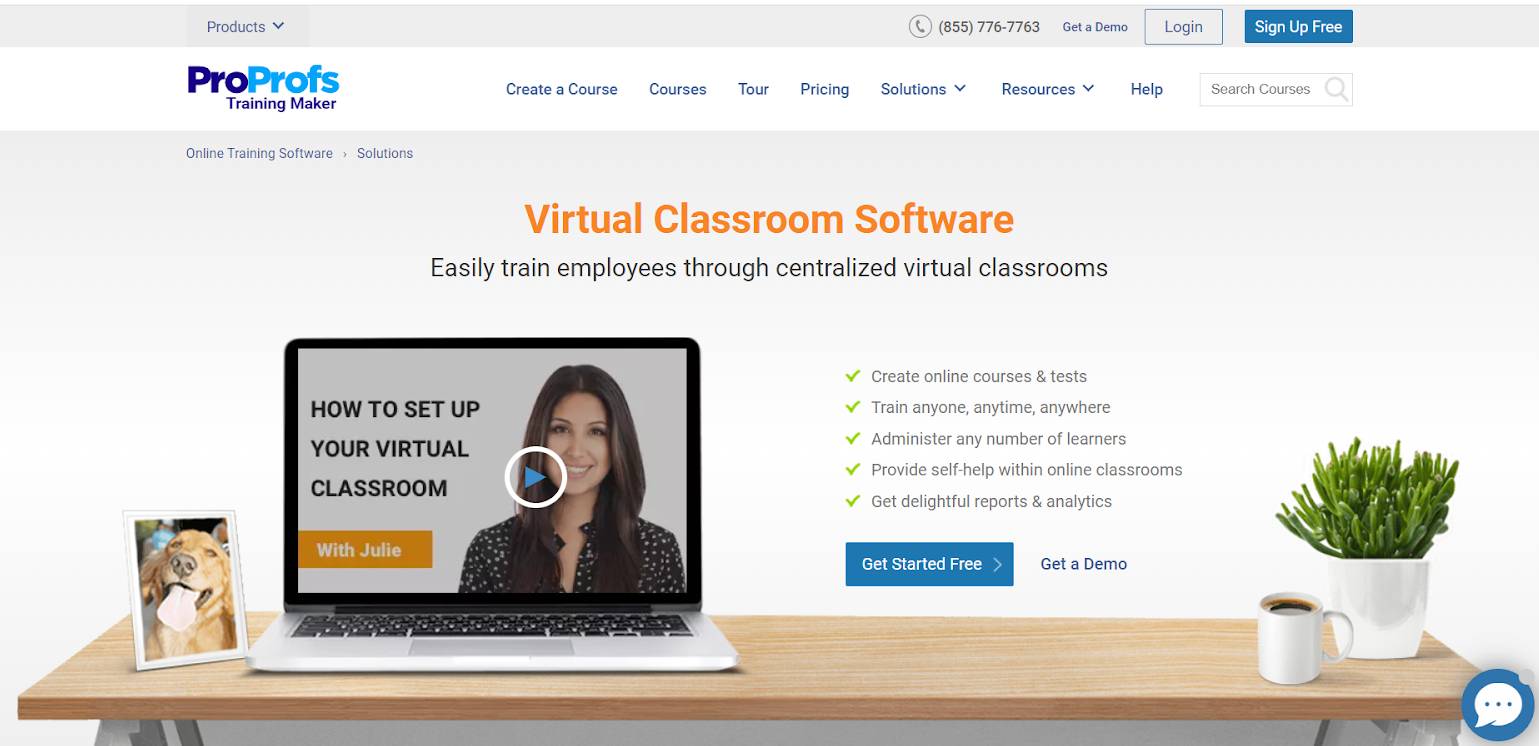
Evaluate Training Results
It’s easy to provide training to your employees but challenging to accurately evaluate its effectiveness.
How can you ensure that learning objectives were met? Did your learners go through all the lessons? Were they engaged throughout the course?
Luckily, an employee assessment can answer all these questions. You can include quizzes, tests, and assessments into your courses to assess knowledge retention.
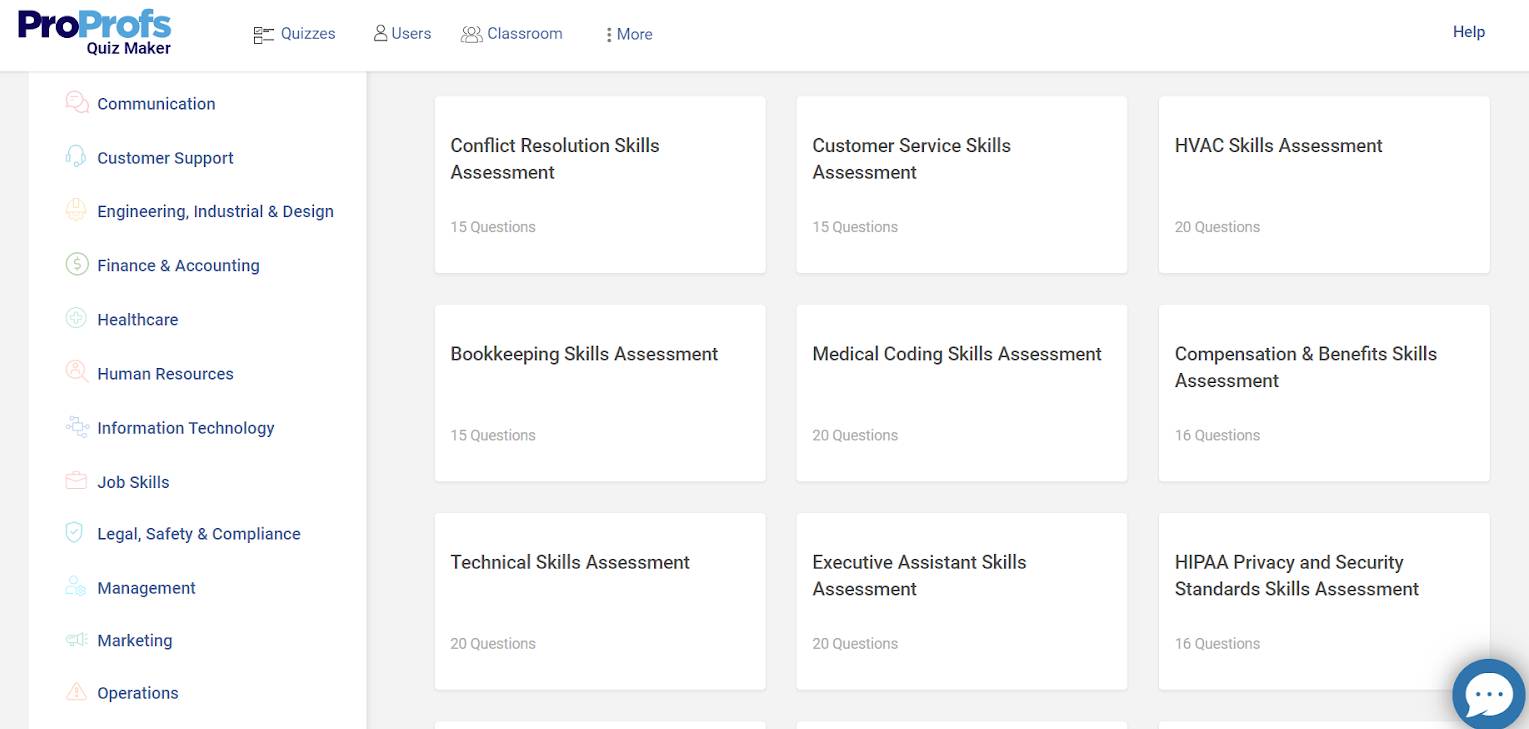
You can also access detailed reports in real time to view who has taken the courses and who still needs to complete them and send email reminders to learners.
Conduct Feedback Surveys
Feedback is an integral part of an employee training process. Make sure you include surveys into your training content, as this will help you in collecting feedback on the impact of your training, helping you measure its impact on the learners.
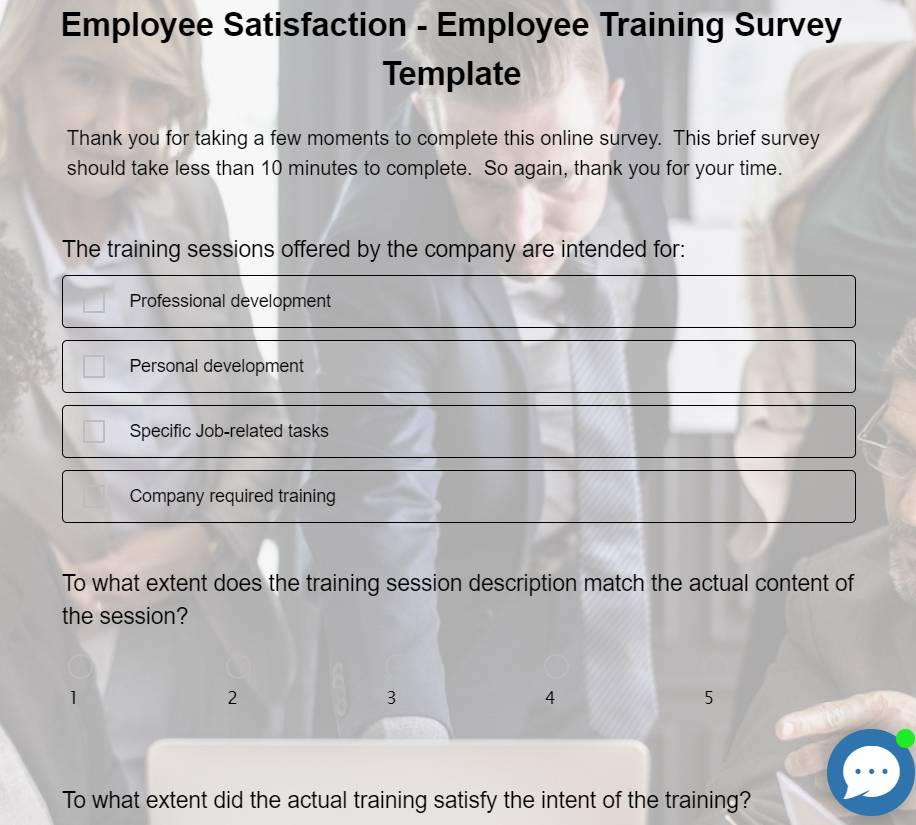
A post-training survey allows learners to share their thoughts and opinions. Reflect on the feedback provided by your employees and work on the areas that require improvement.
Mistakes to Avoid While Creating an Employee Training Plan
Mistakes while creating a training plan can prove to be costly. So you’d want to ensure that the training program is as effective as possible. Avoid the mistakes we’ve discussed below to make your training worthwhile.
Lack of Preparation
Prepare ahead of time before delivering your training courses to learners. Simply sending a meeting link or course link is not enough.
For an impactful learning session, create a checklist of what needs to be done and communicate to your learners what they should expect after completing the training.
Always line up your training materials according to your training calendar so the training can be carried out according to the plan.
Failure to Incorporate Pedagogical Approaches
Every employee has their own way of learning things. You need to take into account the different learning styles of employees.
Before creating an online training program, it’s important to understand pedagogy well. Plan your lessons in a way that best suits your team’s interests.
To do this, you can integrate various elements like images, videos, PDFs, audio, and more! This will meet the diverse learning styles of your learners, such as visual and auditory learning.
Not Making the Training Engaging
Training should be fun. It should deliver information in an enjoyable way.
A disengaging training program is one of the biggest causes of a training failure.
Remember: employee engagement is crucial to organizational success.
You must ensure that your training has all the engaging elements. There are multiple ways to make your content interesting.
Add brainstorming games, collaboration tools, quizzes, assessments, and multimedia options like images, videos, podcasts, PDFs, etc.
Distribute certificates to your learners to validate the completion of courses and keep them motivated to participate in your training.
WATCH: How to Create Custom Certificates With Your Own Logo and Branding
Failure to Gather Feedback on Training
A feedback system is extremely important to evaluate the quality of your training program. It also helps you understand your employee’s needs.
To do this, start incorporating feedback forms like surveys into your courses and let your learners share their valuable thoughts and opinions.
Make necessary adjustments to your training based on the shared feedback.
Get Ready to Create the Best Employee Training Plan
A well-planned employee training program goes a long way in retaining top talent, enhancing job satisfaction, and boosting employee morale and engagement.
Studies reveal that organizations with highly engaged employees have shown a 17% increase in productivity and a 41% reduction in absenteeism.
So, identify your learners’ needs, align them with your business goals, draft a training plan, choose the right training tools, conduct feedback surveys and make your training successful.
For this purpose, you can use a Learning Management System (LMS) to create a quality training plan, implement it, and get meaningful insights into how your learners engage with training.
 Tips
Tips
We’d love to hear your tips & suggestions on this article!
Get Free Employee Training Software — All Features, Forever.
We've helped 567 companies train 200,000+ employees. Create courses in under a minute with our AI LMS or use 200+ ready-made courses on compliance, harassment, DEI, onboarding, and more!


 We'd love your feedback!
We'd love your feedback! Thanks for your feedback!
Thanks for your feedback!







